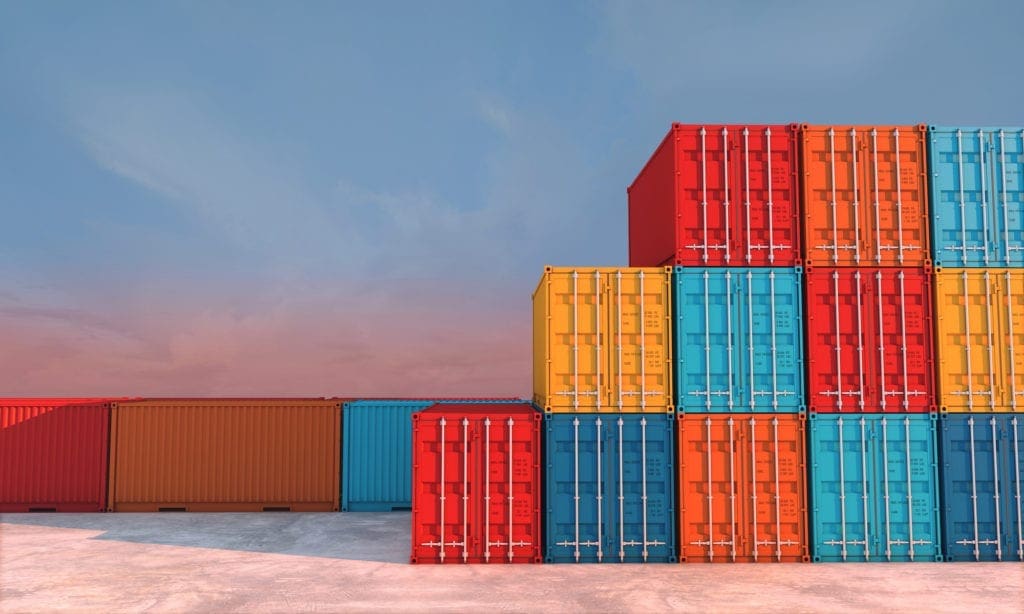
From Small to Extra Large: How to Choose the Perfect Shipping Container Size
If you’re planning to transport goods across the country or overseas, turning a shipping container into a retail space, or simply need affordable storage space, you’ll need to choose the right size shipping container for your plans. Selecting the appropriate size container will not only ensure your goods are stored safely, but it can also help save you time and money. But with so many sizes available, how do you determine the perfect shipping container size? In this blog post, we’ll explore some key factors to consider and help you make an informed decision.
Size and Weight
Before choosing a shipping container, you need to evaluate the size and weight of your items. This will help you determine the container size you need. You don’t want to select a container that’s too small, as it may result in overpacking and damage to your goods. Similarly, you don’t want to select a container that’s too large, as it will lead to unnecessary expenses.
Consider Dimensions
Consider the dimensions of different container sizes. Shipping containers come in a range of sizes, including:
- 10-foot
- 20-foot
- 40-foot
- 45-foot
- 53-foot
You should consider the dimensions of each size to determine which one is most suitable for your needs. For example, if you’re transporting heavy machinery, a 40-foot or 45-foot container would be more appropriate, while a 10-foot container would be suitable for smaller items.
Cargo Size
If you’re using your shipping container for traditional cargo, you’ll need to consider the size of your cargo when selecting a container. Smaller containers are suitable for smaller items, while larger containers can accommodate larger items. You should also consider how much space your cargo will need inside the container.
The type of cargo you’re transporting is another crucial factor to consider when selecting a shipping container size. For instance, if you’re transporting perishable goods, such as fruits and vegetables, you may need a refrigerated container to keep them fresh. Alternatively, if you’re transporting hazardous materials, you may need a specialized container that meets specific safety requirements.


Purpose
From small to large, shipping containers can be used for a multitude of purposes. When choosing the size of the shipping container that will be best for you, you should also consider the purpose of your shipping container. Are you transporting goods? Will you be using your shipping container to convert it to a retail or office space? Will you be using it as a storage unit at your home or business? Understanding the purpose of your shipping container will help you determine the size and type that best suits your needs.
Transportation Needs
Another factor to consider when choosing a shipping container size is your transportation needs. Do you require door-to-door service or will you be using a port? If you’re using a port, you’ll need to consider the size of the cargo vessel to determine which container size is most suitable. If you need door-to-door service, you may need a smaller container that can be easily transported by truck.
Additional Costs
When selecting a shipping container, it’s important to factor in additional costs. For instance, if you’re transporting goods internationally, you’ll need to consider customs fees, taxes, and other charges that may be associated with the size of the container. Additionally, you may need to purchase insurance to protect your cargo during transportation.
Choosing the right size shipping container can be challenging, but with careful consideration of the above factors, you can make an informed decision. By evaluating the size and weight of your cargo, considering the dimensions of different container sizes, thinking about the type of cargo you’re transporting, assessing your transportation needs, and factoring in additional costs, you can select the perfect shipping container size for your needs.
Cost of Different Shipping Container Sizes
In addition to determining how much space you need in your shipping container, it is also vital to consider your budget. The cost of shipping containers will vary depending on the size of the container you choose. Here are a few examples of the average cost for these shipping container sizes:
The Cost of Small Shipping Containers
- Small shipping containers, such as 10-foot and 20-foot containers, are often used for transporting small items or for storage purposes.
- The cost of a 10-foot container can range from $1,500 to $2,500, while a 20-foot container can cost between $2,000 to $3,000.
- Keep in mind that the actual cost will depend on several factors, such as the age and condition of the container, its location, and the company providing the container.


The Cost of Medium Shipping Containers
- Medium-sized shipping containers, such as 30-foot and 40-foot containers, are commonly used for transporting furniture, vehicles, and other large items.
- The cost of a 30-foot container ranges from $3,000 to $5,000, while a 40-foot container can cost between $4,000 to $6,000.
- Again, the cost will depend on several factors, such as the age and condition of the container, its location, and the company providing the container.
The Cost of Large Shipping Containers
- Large shipping containers, such as 45-foot containers, are used for transporting heavy machinery and oversized cargo.
- The cost of a 45-foot container can range from $5,000 to $7,000.
- However, the actual cost will depend on several factors, such as the age and condition of the container, its location, and the company providing the container.
How Much Weight Can a Shipping Container Hold?
When it comes to shipping containers, one of the most important things to consider is how much weight they can hold. This is crucial to ensure that your cargo is transported safely and securely without causing any damage to the container or its contents. In this blog post, we’ll explore the weight capacity of different shipping container sizes and provide examples of the maximum weight shipping containers can hold for different uses.
Weight Capacity of Shipping Containers
Shipping containers come in different sizes and weight capacities, and the maximum weight capacity will depend on the size of the container. In general, the weight capacity of shipping containers ranges from 20,000 pounds to 60,000 pounds.
Here are some examples of the weight capacity of different shipping container sizes:
- 10-foot shipping container: A 10-foot shipping container can hold up to 20,000 pounds of cargo. This size of the container is ideal for small-scale transportation needs, such as moving household items.
- 20-foot shipping container: A 20-foot shipping container can hold up to 60,000 pounds of cargo. This size of the container is commonly used for transporting larger items such as vehicles, furniture, and construction materials.
- 40-foot shipping container: A 40-foot shipping container can hold up to 60,000 pounds of cargo. This size of the container is suitable for transporting large amounts of cargo, such as machinery or construction materials.
- 45-foot shipping container: A 45-foot shipping container can hold up to 60,000 pounds of cargo. This size of the container is commonly used for transporting oversized cargo, such as vehicles or heavy machinery.


Examples of Weight Capacity for Different Shipping Container Uses
The weight capacity of shipping containers will vary depending on the type of cargo that needs to be transported. Here are some examples of the maximum weight capacity for different uses:
Construction Materials:
For transporting construction materials, such as bricks or tiles, a 20-foot shipping container can hold up to 22.5 tons of weight.
Heavy Machinery:
Heavy machineries, such as bulldozers or excavators, require a 40-foot or 45-foot shipping container. These containers have a maximum weight capacity of up to 60,000 pounds.
Furniture:
For transporting furniture, a 20-foot shipping container can hold up to 3,500 cubic feet of space and a maximum weight capacity of up to 60,000 pounds.
Vehicles:
For transport vehicles, such as cars or trucks, a 20-foot shipping container can hold up to four vehicles with a maximum weight capacity of up to 60,000 pounds.
When it comes to shipping containers, understanding their weight capacity is essential to ensure the safe and secure transportation of your cargo. By selecting the appropriate container size based on the weight and size of your cargo, you can ensure that your goods arrive at their destination in optimal condition.

Leave a Reply